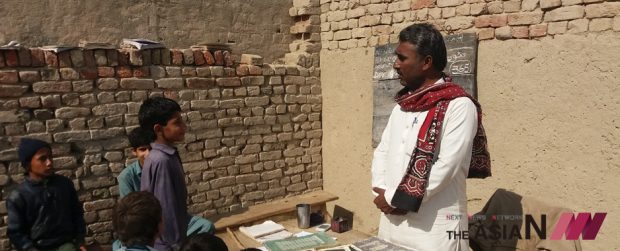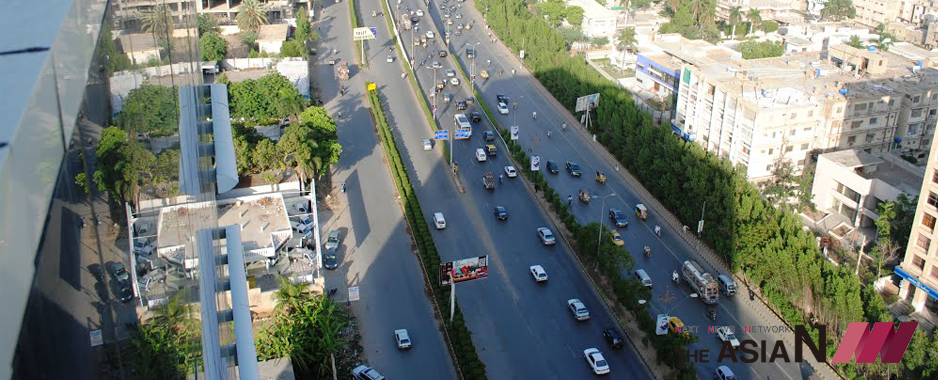
All is “Not Well” with Pakistan’s Education Sector
Although the governments, federal as well as provincial, have begun to focus on improving existing educational systems by establishing new higher educational institutions in Pakistan, the situation at the primary and secondary level is dismal. According to official data, around 48 percent of public schools in the country do not have toilets, boundary walls, electricity, and drinking water, besides the poor quality of education provided by such facilities. Many parents have resorted to private education options. As such, Pakistan’s private education scene has become a thriving business sector. The data about public schools are revealed in the fourth edition of the annual Pakistan District Education Rankings 2016, which covers all 151 national districts to assess their overall education scores—based on levels of enrollment, retention, learning, gender parity, and school facilities. This new index for school completeness shows that only 52% of all government schools in the country have all four basic facilities— toilets, boundary walls, running electricity, and drinking water. Only 24 of the 146 districts ranked came above a 90-score in school infrastructure. The figures also show that a whopping 81% of all government schools are primary schools, implying that many children do not have the opportunity to move on to secondary education after primary schooling. It is said that all provinces have seen a general decline in schools’ retention of students and levels of gender parity. Individually, some districts have shown improvements, but there is little indication of major nationwide development in either education quality or the quality of school infrastructure. Province-wise statistics say that 50% of schools in Khyber All is “Not Well” with Pakistan’s Education Sector 27 Pakhtoonkhaw (KPK) province lack the provision of all four basic facilities. 38% of all public schools in the KPK (with a total of 27,626 schools) still lack electricity. To date, Balochistan and Sindh provinces continue to manifest the nation’s lowest education and infrastructure scores. Almost half of Sindh’s public schools do not come with dinking water systems, let alone clean drinking water. 63% of government-run schools in this region do not have any electricity at all. Out of the 45,447 schools in Sindh, a substantial 46% do not have toilet facilities and 41% are without boundary walls.
Fortunately, such grave numbers were officially reported by Sindh province. A couple of weeks ago, in a meeting chaired by the Chief Minister, it was said that the number of students in government
schools had decreased to more than 1 million since the past 6 years. “100,000 students leave school in the first month every year due to the absence of basic facilities such as water and sanitation,”
admitted Iqbal Hussain Durrani, secretary to the provincial education department, before a judicial commission. While some 23,000 schools have no electricity and 98% do not have educational laboratories, the general incompetence on the part of the education department has resulted in the closure of more than 5000 schools across the province in previous decades. Balochistan province as a total of 12,987 public schools out of which 77 percent operate without electricity and 73 percent do not have toilets. Surprisingly, Punjabis the only province where, accordingto the National Education Management& Information System (NEMIS), just ahandful of public schools lack availabilityof these basic amenities. They say thatless than one percent (only 174 out of total 52,314) of schools are in need ofclean water infrastructure. However,many people do not agree to such officialdata of Punjab schools.Hafiz Ghulam Mohyuddin, who heads a faction of the Punjab Teachers Union, believes ground realities do not match the status mentioned in the NEMIS report.
“Faisalabad is the second largest city of Punjab and still many of its public schools lack basic facilities,” Mohyuddin said, further asking, “How things would be in far-flung neglected districts?”
“In many government schools in Sindh, students and teachers experience a jail-like environment, especially in the summer, as the schools lack basic facilities,” said Aslam Deedhar who is the Lrkana chapter general secretary of Sindh’s Primary Teachers Association. Deedhar regretfully noted that missing facility issues has not been taken seriously over the years. “In rural areas, scores of schools are without buildings and students used to study under the open sky sitting on the ground.”
Similarly, teachers in Balochistan do not see the validity of more positive reports, noting persisting issues with missing facilities and the growing number of dropout and out-of-school children.
Another report showed that 70 percent of children between the ages of 5 and 16 are still out of school of Balochistan.“Every government makes tall claims, but little reflects in reality. Hundreds of
schools are shelter-less (without buildings and operate in open areas) in Balochistan and thousands lack basic amenities,” said Nawaz Jattak, who is chairman of the Government Teacher Association in Balochistan (GTAB). He questions just how such dilapidated schools could attract any parents and students. Meanwhile, Sindh Education Minister Jam Mehtab Hussaid has said that the provincial government allocated over 2 billion rupees as its current budget for provision of basic facilities and renovation of over 1,400 girls’ schools. “Our focus is girls’ schools to ensure the availability of toilets, boundary walls, and other missing facilities at the earliest,” he said, adding, “Separately, we have allocated 1.5 billion Rs for the maintenance and repairing of boys’ schools.”
At this point, it is not difficult to imagine what the students and teachers in schools are having to experience with no water and electricity during the scorching summers and freezing winters. Putting even the pressing matters of hygiene and social/cultural factors to a halt, in this state, would any parent happily send their children, especially their daughters, to schools missing toilet facilities?
Stakeholders and relevant parties to the nation’s education system say the slogan of quality education in public schools seems appealing, but they question whether the problematic state is not being worsened by the national environment that is conducive to enabling slow progress. Article 25-A found in the Pakistani Constitution makes free and compulsory education a right to all children aged 5-16 years. Wouldn’t this include related infrastructural provisions at such schools?
This is not the first time missing facilities in Pakistan’s public schools have been highlighted. The NEMIS has been publishing its Pakistan Education Statistics 1992 to 1993 on an annual basis. There has also been a general consensus among stakeholders, particularly teachers, that strong political will to take on issues related to nonavailabilities of facilities is absent, owing to the meager budgetary allocations in this regard.







